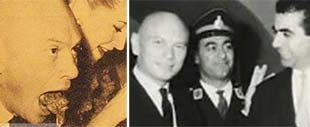His contributions continue to be celebrated by scholars, artists, and cultural historians who view him as a central figure in the cultural renaissance that occurred in Iran during the 1960s and 1970s. As a man who believed in the power of imagination and intellect to transform society, Firouz Shirvanlu remains an enduring symbol of Iran’s complex yet vibrant modern history.
With the rise of the freedom struggle in Iran, Firuz Shirvanloo aligned himself with the revolutionaries, actively supporting the call for change. Alongside the writers and editors of the Niavaran Cultural Center, he took a bold step by publishing a public statement in support of the protesters. As a symbolic act of solidarity, they changed the name of the Niavaran Cultural Center to “Nima,” honoring the spirit of cultural resistance. However, after the revolution, the Cultural Center was shut down. Facing limited options, Shirvanloo and his wife began a small-scale clothing production venture, relying on a few sewing machines and their shared determination to make a living.
In the final years of his life, Shirvanloo dedicated himself to a new intellectual mission—compiling specialized dictionaries in the fields of philosophy, sociology, and art. Understanding the difficulty of translating complex texts, he aimed to support Iranian translators by donating many of these dictionaries. Despite lacking steady financial backing, he worked tirelessly on several dictionaries and encyclopedias, driven by a desire to enrich the country’s academic and cultural resources.
Firuz Shirvanloo passed away on January 20, 1988, at Sasan Hospital in Tehran, following a brief illness. His legacy endures through his cultural activism, his commitment to knowledge, and the quiet yet impactful efforts he made to empower thinkers and creatives in a rapidly changing society.

